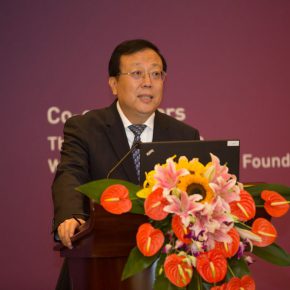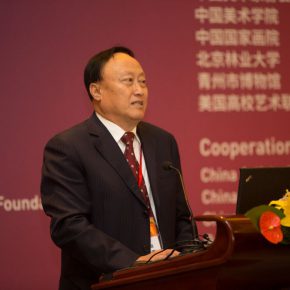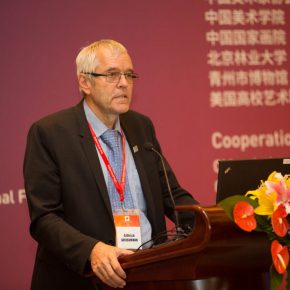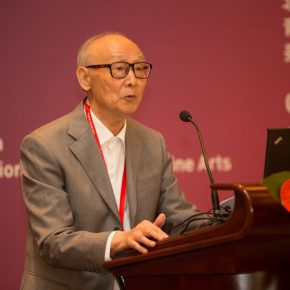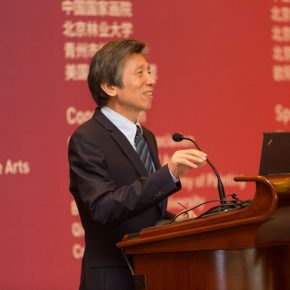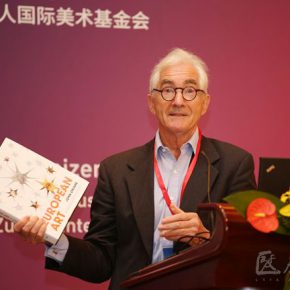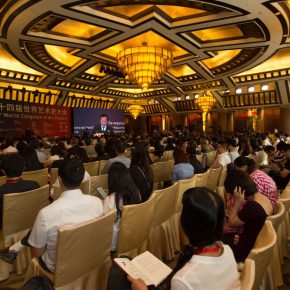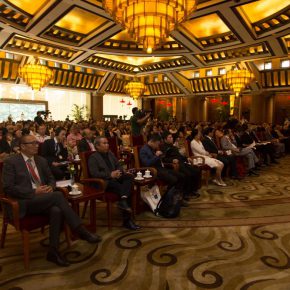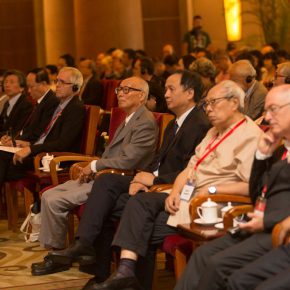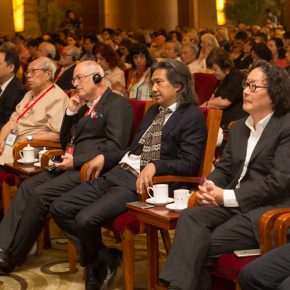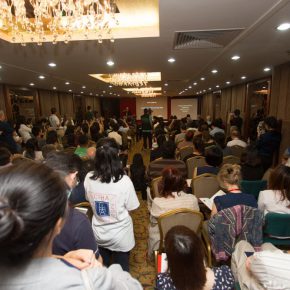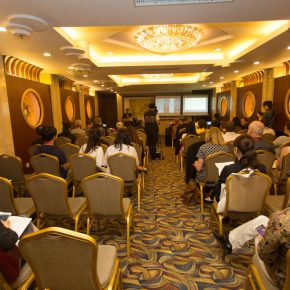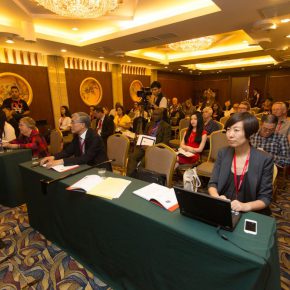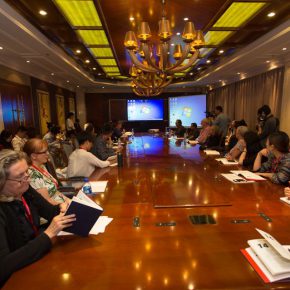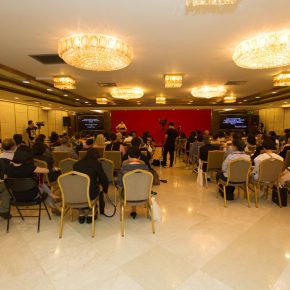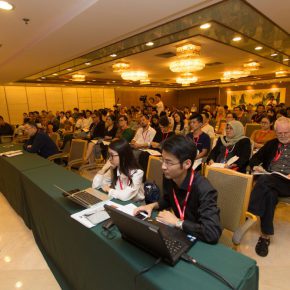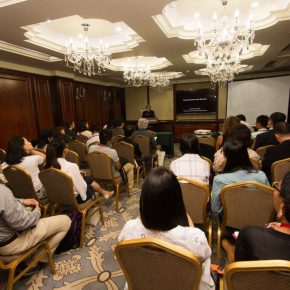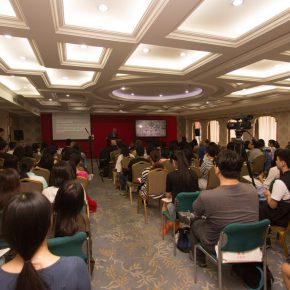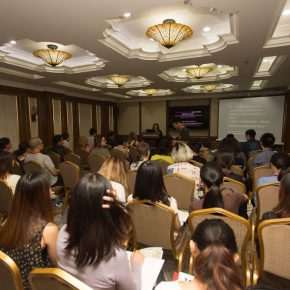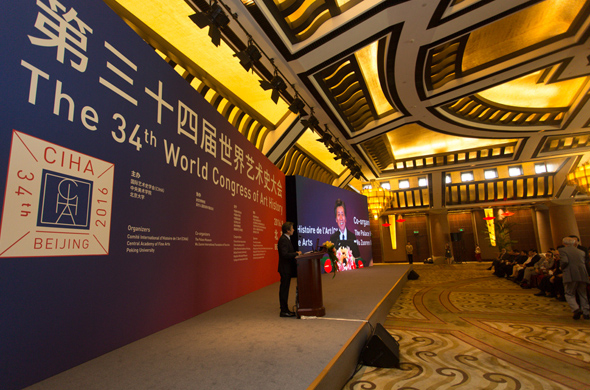
On September 16, 2016, co-sponsored by the Congress of the International Committee of the History of Art (abbr. CIHA), the Central Academy of Fine Arts (abbr. CAFA) and Peking University, the 34th World Congress of Art History was grandly unveiled at Diaoyutai State Guesthouse in Beijing. Deputy Minister of Education, Chairman of UNESCO’s 37th Congress Hao Ping, Party Secretary of Peking University, Director of School Council Zhu Shanlu, Director of Chinese Preparatory Committee at the World Congress of Art History, Prof. Shao Dazhen from CAFA, and Chairman of the CIHA Ulrich Grossman attended the opening ceremony and delivered a speech. Representative of the organizers and President of CAFA Fan Di’an presided over the opening ceremony.
Director of the Department of International Cooperation and Exchange at the Ministry of Education Xu Tao, Deputy Director of the Department of Art at the Ministry of Culture Zhou Hanping, Academic Secretary-General of the CIHA Thierry Dufrêne, Administrative Secretary-General of the CIHA Peter J. Schneemann, Prof. Xue Yongnian from CAFA, Director of National Art Museum of China, Vice-Chairman of the China Artists Association Wu Weishan, Party Secretary of China Artists Association Xu Li, Director of the Academic Committee at CAFA Xu Bing, President of Nanjing University of the Arts Liu Weidong, Vice President of Peking University Li Yansong, Vice President of China National Academy of Painting Zhang Xiaoling, Deputy Director of the National Museum of China Xie Xiaoquan, Deputy Party Secretary of CAFA Wang Shaojun, Assistant to President of CAFA Wang Xiaolin, Vice Presidents of China Academy of Art in Hangzhou Hang Jian and Gao Shiming, Assistant to the President of Peking University Wang Bo, Deputy Director of Chinese Preparatory Committee at the World Congress of Art History and Secretary-General Prof. LaoZhu from the Department of History, Peking University, as well as more than 450 experts and scholars from 43 countries and regions attended the opening ceremony.
The World Congress of Art History is an important meeting of the international culture and art circles, and it is jointly organized by CIHA at UNESCO and the host country every four years, it has held 33 sessions since 1873, known as the “Olympics” of international culture and Art History. After many years of effort by the preparatory group of the World Congress of Art History, China successfully bid to host the 34th World Congress of Art History, which is the first time for it to be held in Asia or a non-Western country. The congress will show the world the results of contemporary Chinese cultural development, and it is an important opportunity for the world to know and understand China through art.
Vice Director of the Ministry of Education Hao Ping said the Ministry of Education would further support a high-level cooperation between domestic and foreign universities in the field of art history, striving to jointly promote the development of world art history.
Director of School Council at Peking University Prof. Zhu Shanlu addressed the opening ceremony and said that, this world congress of art history was regarded as the first grand event to celebrate the 120th anniversary of Peking University in 2018. As one of the organizers of the congress, Peking University was known as focusing on art education and art studies. Since 1986, Peking University has been also responsible for the “Chinese Modern Art Archives”, and presided over the editing of “Chinese Contemporary Art Yearbook”, synchronously recording the new course of development of Chinese contemporary art from an academic perspective. Peking University would take use of the opportunity of the congress held in Beijing, to strengthen the teaching and research in art history and promote the Sino-foreign academic exchange.
Director of National Museum of Germany Prof. Georg Ulrich Grossmann from the Department of Art History at Otto-Friedrich-Universität Bamberg subsequently delivered a speech. Grossmann said that it was the first time for the World Congress of Art History to be held in a “non-Western” country, in China that has never been largely affected by Europe. He praised the theme of the congress “Art and Art History in Different Histories and Different Cultures”. In the process of previous congresses, some experts and scholars were involved in similar issues in their speeches. He took the architectural history that he was an expert in as an example, to analyze the diversity of art and art history in different regions of the world, as well as the artistic communication and mutual integration between different civilizations in the contemporary world. He believed that art and art history were both very important for the development of society, the growth of young students and improving the environment for survival.
Director of Chinese Preparatory Committee at the World Congress of Art History, Prof. Shao Dazhen from CAFA delivered a speech and pointed out that the 34th World Congress of Art History held in China was an unprecedented event in the world of art history and also an academic platform for the Chinese scholars of art history and foreign experts and scholars to have a close communication with each other, learning from each other.
At the opening ceremony, on behalf of the participants, Prof. John Onians from University of East Anglia gave a lecture entitled “Energy of ‘Air’: Art, World and Mind”. He introduced the concept of “air” and neuroscience concepts, providing a new academic perspective for the study of art history. He took “air” and neuroscience as the theoretical framework, to explain his observations and considerations on different artistic creations and developmental history between China and the West, the ancient and present, from ancient Greek, ancient China, to Renaissance and modern art, putting forward that “air” and neuroscience would help us understand the creator and the viewer’s activities, to better understand the history of art.
Deputy Director of Chinese Preparatory Committee at the World Congress of Art History, President of CAFA Prof. Fan Di’an delivered a lecture entitled “Theme and Cultural Context of the World Congress of Art History” and pointed out that the theme of the congress “Terms” (Concept: Art and Art History in Different Histories and Different Cultures) highlighted the Chinese artistic charm nurtured in the ancient Chinese civilization and the position of the cultural pattern in the world, whereby the use of an historical perspective to recall the equal significance of Western and Chinese civilization, to form a new understanding and interpretation of human civilization, cultural and artistic heritage, the theme reflects the progress of the study in art history, and also reflects the concerns in culture. It is also the traditional Chinese cultural idea of “harmonious but different”, which is in response to the problems that are needed to be discussed and resolved under the global cultural context.
The conference has received 1012 contributions from around the world, among 290 spokesmen from 43 countries and regions all over the world are selected and confirmed to participate in the conference. The special sessions closed on September 20.
Text by Publicity Department and Photo by CAFA ART INFO
Translated by Chen Peihua and edited by Sue/CAFA ART INFO


